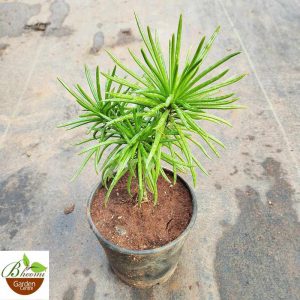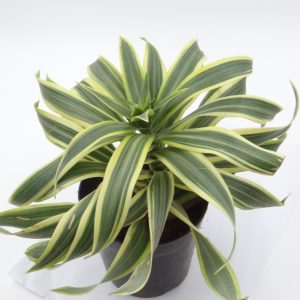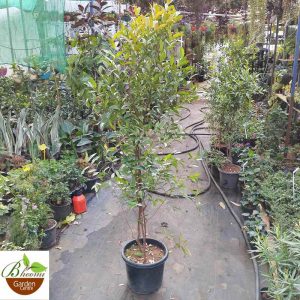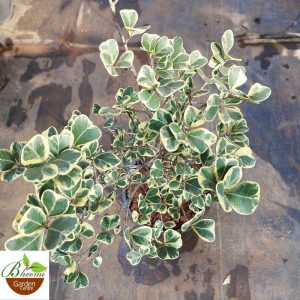Ficus Triangularis variegata
This product is available for shipping only in Bangalore
Variegated Dwarf Triangle Fig, a magnificent variegated plant with beautiful 2-3″ triangular leaves, so unique with no two leaves alike. A small sized tree or shrub grows up to 3 m tall under cultivation.The triangular leaf has irregular yellowish-white edges, with shades of green sections in the center.
Plant Height: approx 2 ft 7 inches including the pot
Pot size : 9 inches nursery pot
1 in stock
- Estimated Delivery : Up to 3 business days
- Free Shipping & Returns : On all orders over ₹550 in Bangalore
Ficus is a pan-tropical genus of trees, shrubs and vines occupying a wide variety of ecological niches; most are evergreen, but some deciduous species are endemic to areas outside of the tropics and to higher elevations. Fig species are characterized by their unique inflorescence and distinctive pollination syndrome.
The always popular ficus tree is a member of the fig family and perfect for caring for as a houseplant. There are several varieties of this plant that are grown as houseplants. Ficus plants range from large trees to woody shrubs to trailing vines. The ficus comes in many shapes and sizes that make this a popular focal point in your home. Ficus, a group of about 900 species of trees, shrubs, and vines, commonly called figs. Native primarily to tropical areas of East Asia, they are distributed throughout the tropics of world. Many are tall forest trees that are buttressed by great spreading roots; others are planted as ornamentals. The triangular leaf has irregular yellowish-white edges, with shades of green sections in the center.
Plant Care: Ficus Triangularis variegata is a easy growing plant. Do not over water it. Keep it in a place where you have a good direct sun. For a this plant, you need well-draining soil. This type of soil ensures excess water drains through the plant pot. This prevents all that extra water from building up in the soil. When there’s too much water in your plant’s soil, it blocks the oxygen from getting through to the roots. The lack of oxygen to a plant’s roots can cause root rot. Root rot is just as the name sounds. It’s when the roots of a plant start to rot away. Fertilize once in a month. Loosen the topsoil without disturbing the roots of the plant so it can uptake the nutrients and moisture easily
General advise about Outdoor plants: Don’t kill your plants with kindness by overwatering. The is the most common mistake gardeners make. Different plants need different levels of moisture between watering. Some plants like moist soil between watering’s, while others prefer to dry out completely.
- Check the soil between watering’s with a stick, or even your finger, pushing below the top layer of soil or mulch to determine how moist the soil is.
- A watering can is an excellent choice for watering plants. Water well around the base.
- Water plants thoroughly. Water should run away from the edges of the plant or drain from the hole in the bottom of the pot.
Plants have individual nutrition needs, and beginning gardeners should be careful not to overfeed their plants. New plant installations will not need fertilizers or food of any kind for the first three months as they come from the nursery prepared for transplant.
Plant fertilizers come in three forms:
- Water-soluble: a liquid mixed with water and poured on the plant
- Spikes: a solid food that is pushed directly into the soil and releases nutrients slowly
- Granular: sprinkled around the base of a plant and watered in.
At the nursery these plants are grown under 40-70% shade cloth. If you plant this plant in a brightly lit area (like direct sun) you may experience leaf burn. It is best to acclimate this plant to its environment by keeping it outside and slowly moving it into a sunny area over a week or two to avoid stress before planting.
Keep an eye open for harmful insects or disease on new plant material. New plantings are not as strong as established plants, so they do require more attention. If you see a concern, you can research the issue or contact us for advice.
** Plants photos are for representation purpose only. We will make best efforts to send the plants as in photos itself, however it is not always guaranteed as plants might overgrow or shrink depending on the season, care or age. Trust us, we want to give you the best.














Reviews
There are no reviews yet.